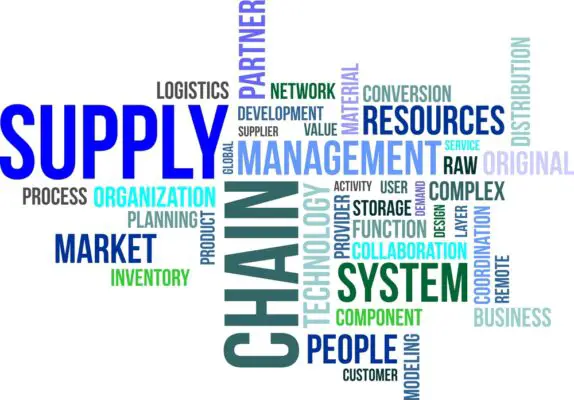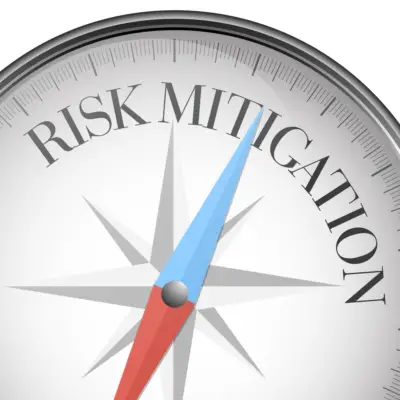Risk scoring is essential in modern risk management, systematically evaluating and prioritizing risks for effective mitigation strategies.
It involves assigning numerical values to risks based on factors like impact and probability.
To accurately quantify risk levels, the risk impact rating is multiplied by risk probability, a crucial step in calculating risk scores.
Enabling risk scoring requires understanding internal and external risk factors, configuring alert triggers, and utilizing specialized software like IdentityIQ.
This process aids organizations in identifying high-risk areas and implementing targeted mitigation actions.

By enhancing risk response strategies through robust risk scoring methods, businesses can fortify their security posture and safeguard against potential threats for both common internal risks and common external risks.
Discover more about optimizing risk scoring for thorough risk management.
Key Takeaways
- Risk scoring evaluates and prioritizes risks effectively for proactive management within an assessment score.
- Determine risk scores based on a risk model vulnerability and business impact assessments.
- Establish a structured framework for systematic risk identification and mitigation in a risk register.
- Utilize risk scoring in IdentityIQ to highlight high-risk entities and align with financial impacts for known risks.
- Configure alerts in LogicGate for real-time risk management and targeted mitigation actions.
Importance of Risk Scoring
Risk scoring is pivotal in evaluating and managing risks within organizations effectively. Entities can prioritize risk response strategies by determining risk scores based on internal and external factors in a risk register.
The integration of risk scoring algorithms significantly enhances the precision of risk estimation, making it a cornerstone in the methodology of risk evaluation.
Incorporating ‘risk factor‘ analysis into this process, using statistical or machine learning methods, enhances the precision of estimating risks.
This includes identifying internal risks within the company, which is a critical component in the overall risk assessment.
Establishing a methodological framework for risk scoring enables proactive risk management and aids in setting project impact thresholds for informed decision-making.
How to Determine Risk Scores: Internal and External Risks
Understanding the distinction between internal and external risks is paramount when determining risk scores in IdentityIQ for holistic risk management strategies.
Internal risk scores originate from within the company, encompassing factors like human errors and undefined roles.
On the other hand, external risk scores evaluate risks external to the organization, such as cyberattacks, economic changes, and natural disasters.
By calculating risk based on these factors, organizations can effectively assess risks, mitigate potential threats, and enhance their risk management practices.
Scoring methods combine vulnerability characterization with the impact on business operations to determine the likelihood and severity of risks.

This inclusive approach enables continuous monitoring of activities, allowing for assigning new risk scores based on evolving behaviors and external circumstances.
What Are Internal Risk Scores?
To effectively manage business risks, organizations must fully understand internal risk scores, which evaluate potential threats originating from within the company, including human errors and asset damage.
Internal risk scores are crucial in helping businesses identify, assess, and calculate risk levels associated with various internal risks.
These scores consider factors like the severity and probability of risks, allowing organizations to assess the potential impact on their operations.
Project Risk Scoring
Project risk scoring plays a pivotal role in project management by providing a systematic framework for identifying and prioritizing potential risks.
- Project managers rely on risk scoring for thorough risk analysis.
- Risk identification is streamlined through the evaluation provided by risk scoring.
- The severity and potential impact are assessed to determine the significance of risks.
- Mitigation strategies are developed based on the probability and impact values assigned during risk scoring.
Establish a Methodological Framework
Establishing a structured methodological framework for risk scoring is essential in effectively identifying and mitigating high-risk entities within organizations.
This framework plays a pivotal role in enabling proactive risk management, enhancing the security posture of organizations, ensuring compliance with policies, and improving overall risk awareness.
By implementing a structured framework for risk scoring, organizations can conduct a more systematic and accurate assessment of risks, leading to better response strategies.
Methodical risk scoring not only helps identify high-risk entities but also aids in efficiently complying with security policies and regulations.
It empowers organizations to make informed decisions and effectively strengthen their risk response strategies, ultimately bolstering their resilience against potential threats.
Project Impact Thresholds
By defining specific thresholds for Project Impact, organizations can effectively prioritize and address risks based on their potential impact on project success.
When considering Project Impact Thresholds, key aspects come into play:
- Clear Prioritization: Setting thresholds helps in clearly prioritizing risks according to their impact level.
- Efficient Resource Allocation: Properly defined thresholds guarantee resources are allocated efficiently to manage risks effectively.
- Minimizing Adverse Events: Focusing on high-impact risks first aids in minimizing adverse events and their consequences.
- Enhanced Risk Management: Understanding and utilizing Project Impact Thresholds enhances overall risk management strategies, leading to better decision-making and project outcomes.
Understanding Risk Scoring Algorithms
Risk scoring algorithms play a crucial role in evaluating risks by using mathematical models to calculate a score based on various factors.
These algorithms help identify potential security threats by analyzing user behavior, location, and anomalies.
Understanding risk-scoring algorithms enables organizations to implement proactive risk management strategies and effectively make informed decisions to address security risks.
Select Indicators that Best Represent the Risk Factors of the Population
Selecting the indicators that best represent the population’s risk factors is a pivotal aspect of understanding risk-scoring algorithms in IdentityIQ.
To guarantee accurate risk quantification and effective risk management strategies, it is essential to:
- Analyze specific risk factors to identify potential threats and vulnerabilities.
- Prioritize high-risk areas by leveraging insights from risk-scoring algorithms.
- Enhance the organization’s security posture through the implementation of these algorithms.
- Mitigate risks efficiently by addressing the identified high-risk areas promptly.
Program Risk Scoring
Understanding program risk-scoring algorithms is crucial to effectively managing risks across multiple projects within a program.
Program risk scoring involves evaluating risks at the program level, aiding in prioritizing and managing risks effectively.
By applying consistent algorithms, organizations gain a holistic view of risk severity and impact on overall objectives.
This process enables strategic risk management and informed decision-making, enhancing the organization’s ability to objectively address its overall risk exposure.
Program risk scoring guarantees that risks are evaluated uniformly across projects, allowing for a structured approach to risk management.
Organizations can compare risks consistently by utilizing these algorithms and make informed choices to mitigate potential threats.
Making score-based decisions
Organizations focus on data-driven decision-making and leverage sophisticated risk-scoring algorithms to enhance security measures and authentication protocols.
When it comes to making score-based decisions using risk-scoring algorithms, several key elements come into play:
- User Behavior Analysis: Understanding user behavior patterns aids in evaluating potential risks accurately.
- IP Address Monitoring: Tracking IP addresses helps identify suspicious activities and potential threats.
- Sign-In Attempt Evaluation: Analyzing sign-in attempts assists in detecting unauthorized access attempts.
- Proactive Risk Assessment: Implementing proactive risk assessment strategies guarantees timely risk mitigation and enhanced security measures.
Enabling Risk Scoring in IdentityIQ
Enabling risk scoring in IdentityIQ involves determining a risk score based on various factors such as user behavior and access patterns.
This score helps tie risks to their potential financial impact, allowing organizations to prioritize mitigation efforts effectively.
How Do You Determine a Risk Score?
How can organizations effectively assess and manage risks associated with users and applications in IdentityIQ?
To determine a risk score in IdentityIQ, follow these steps:
- Utilize Algorithms: Calculate risk scores using predefined algorithms to evaluate the risk level of identities and applications.
- Configuration Options: Customize risk scoring configurations in IdentityIQ to highlight high-risk users and accounts effectively.
- Access Control: Assign administrative roles to guarantee proper access control and governance over risk-scoring settings.
- Security Risks Identification: Trigger notifications based on risk scores to promptly alert administrators about potential security risks.
Tie Risk To Financial Impact with Risk Quantification
To enhance decision-making processes regarding risk management in IdentityIQ, organizations can leverage risk quantification to align risk levels with potential financial impacts.
Risk quantification allows organizations to prioritize risks based on their potential financial consequences, enabling them to allocate resources effectively by focusing on high-impact risks first.
Organizations can enhance risk management strategies within the IdentityIQ platform by linking risk scoring to financial outcomes.
This structured approach provides a clear methodology for evaluating and managing risks, ensuring a more proactive and informed risk response.

Configuring Alerts and Notifications
When configuring alerts and notifications in IdentityIQ, it is vital to contemplate alert trigger conditions and notification delivery methods.
Understanding the specific conditions that trigger alerts based on risk scores and deciding how notifications will be delivered are key aspects of proactive risk management.
Alert Trigger Conditions
Upon configuring alert trigger conditions in a risk scoring system, organizations can effectively proactively address and manage potential risks in real time.
Identifying relevant risk factors for alert triggers enhances risk response strategies.
Accurate risk scores help determine the severity of alerts triggered.
Configuring alert trigger conditions aids in predicting risk probability and taking proactive measures.
Real-time management of common internal and external risks is facilitated through timely alerts.
Notification Delivery Methods
Configuring alerts and notifications in IdentityIQ through various delivery methods is essential for enhancing proactive risk management practices within organizations.
By utilizing risk scoring, alerts can be customized to notify about high-risk entities or events in real time, enabling prompt responses to potential risks.
These configuration methods allow notifications to be delivered via email, SMS, or through a dashboard, ensuring that the organization stays informed and prepared.
Such alert customization strengthens the security posture and fosters a culture of vigilance against evolving threats.
Implementing real-time delivery mechanisms for alerts and notifications is paramount for organizations aiming to maintain a proactive risk management approach and effectively mitigate potential security risks.
Strengthening Risk Response Strategies
When it comes to strengthening risk response strategies, organizations can benefit greatly from understanding how LogicGate can level up their risk scoring.
Using LogicGate’s capabilities, organizations can effectively enhance risk assessment processes, prioritize high-risk areas, and implement targeted mitigation actions.
This strategic approach enables organizations to manage risks proactively, comply with security policies, and ultimately bolster their overall security posture.
How LogicGate Can Level Up Your Risk Scoring
Enhancing risk scoring capabilities through LogicGate’s centralized platform can greatly strengthen organizations’ risk response strategies.
Leveraging LogicGate for risk scoring offers numerous benefits:
- Customizable Methodologies: Tailoring risk-scoring approaches to fit specific risk profiles and business needs enhances accuracy and relevance.
- Automation and Data Analytics: By incorporating automation and data analytics, organizations improve the efficiency and precision of their risk-scoring processes.
- Streamlined Workflows: LogicGate simplifies risk-scoring workflows, enabling swift and effective decision-making to mitigate risks.
- Ongoing Risk Management: With LogicGate, organizations can continuously track and monitor risk scores, ensuring proactive risk management and compliance maintenance.
Frequently Asked Questions
How Do We Scoring a Risk?
Risk scoring involves evaluating risk levels through a calculated score that considers impact and probability.
This process aids in identifying vulnerabilities, enhancing risk management, and enabling proactive measures for improved security. It plays a vital role in decision-making and risk mitigation strategies.
How Do You Assign a Risk Score?
Assigning a risk score involves evaluating the impact and probability of a risk event. By multiplying these factors, organizations can determine the severity of risks, aiding in effective risk management and mitigation strategies for enhanced security and compliance.
How Do You Apply a Risk Rating?
Applying a risk rating involves evaluating the likelihood and impact of potential risks based on predefined criteria.
By combining these factors, organizations can determine the severity of risks, enabling effective prioritization and mitigation strategies.
What Is the Scoring Scale for Risk Assessment?
The scoring scale for risk assessment typically ranges from low to high, quantifying the severity of potential risks.
This scale helps prioritize risk management efforts by categorizing risks based on their potential consequences, enabling effective risk mitigation strategies within organizations.

Conclusion
Implementing risk scoring within IdentityIQ is an essential tool for organizations to evaluate and mitigate potential risks associated with users and applications.
By utilizing specialized algorithms to pinpoint high-risk entities, activate alerts, and establish notification protocols, organizations can fortify their security infrastructure and enhance risk management strategies with precision and efficacy.
This strategic capability aligns with regulatory requirements and promotes proactive risk mitigation and informed decision-making.

Chris Ekai is a Risk Management expert with over 10 years of experience in the field. He has a Master’s(MSc) degree in Risk Management from University of Portsmouth and is a CPA and Finance professional. He currently works as a Content Manager at Risk Publishing, writing about Enterprise Risk Management, Business Continuity Management and Project Management.

